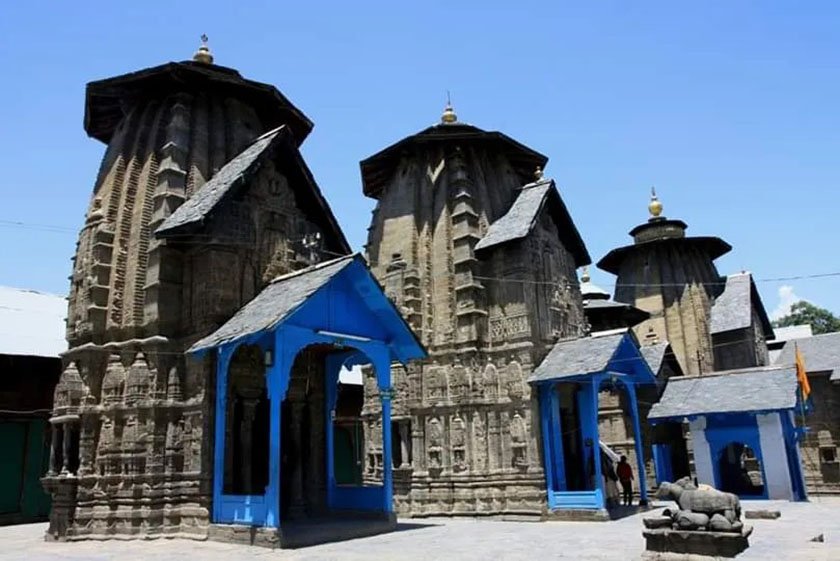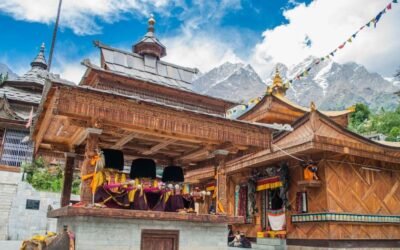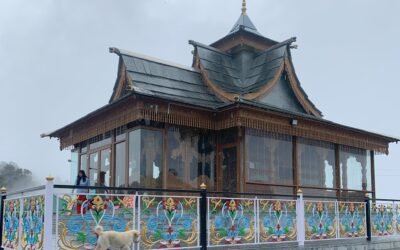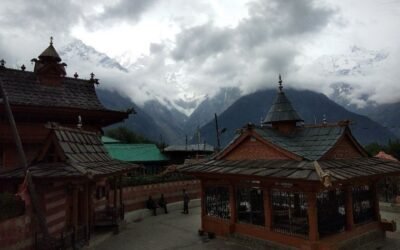Nestled at the northwestern corner of the historic Chowgan in Chamba town, the Shri Hari Rai Temple is a magnificent 11th-century shrine dedicated to Lord Vishnu. With its towering Shikhara, intricate stone carvings, and a rare idol of Vishnu in his three-faced form, this temple is a masterpiece of early Himachali architecture and devotion.
🌄 Location & Accessibility
- Location: Chowgan Mohalla, near Chaugan Gate, Chamba, Himachal Pradesh – 176310
- Altitude: ~996 meters above sea level
- Nearest Town: Centrally located in Chamba
- How to Reach:
- By Road: Well-connected via NH-154 and NH-503 from Pathankot, Dalhousie, and Dharamshala
- By Rail: Nearest station – Pathankot (120 km)
- By Air: Gaggal Airport, Kangra (~180 km)
- The temple is a short walk from the Chamba Bus Stand and Bhuri Singh Museum
🛕 Historical & Artistic Significance
Built in the 11th century by King Salabahana, the temple is one of the oldest surviving structures in Chamba. It showcases the Shikhara style of North Indian temple architecture, with a soaring spire and a sanctum raised on a stone platform.
The main idol of Lord Vishnu is a rare Chaturmurti—depicting his three faces: human, lion (Narasimha), and boar (Varaha)—riding a chariot drawn by six horses. The idol is richly adorned with rings, armlets, necklaces, and a mukut, all crafted in bronze and embellished with fine detailing.
🕉️ Deity & Worship
The Shri Hari Rai Temple is dedicated to Lord Vishnu, worshipped here in his three-faced form—human, lion, and boar—symbolizing his avatars as Vamana, Narasimha, and Varaha. The main idol is a magnificent bronze sculpture riding a six-horse chariot, adorned with rings, armlets, necklaces, and a mukut (crown), reflecting the deity’s regal and cosmic stature.
Worship rituals include daily aartis, incense offerings, and recitation of Vishnu Sahasranama, with devotees seeking protection, prosperity, and spiritual harmony. The temple is especially vibrant during Vaikuntha Ekadashi and Janmashtami, when special pujas and community feasts are held. Pilgrims offer tulsi leaves, yellow cloth, and sweets, and circumambulate the sanctum to invoke Vishnu’s blessings for moksha (liberation) and balance in worldly life. The temple’s serene setting and ancient aura make it a revered site for meditation and quiet devotion.
🏛️ Temple Highlights
- Shikhara-style architecture with intricate stone carvings and floral motifs
- Bronze idol of Vishnu with three faces and six-horse chariot
- Niches featuring Lord Shiva with Uma, Surya on a chariot, and other Brahmanical deities
- The temple is coated in saffron color, making it stand out among Chamba’s temples
- A metallic Garuda statue and ornate wooden doors enhance the temple’s grandeur
🎉 Rituals & Celebrations
- Daily Aartis: Held in the morning and evening with traditional conch and bell sounds
- Navratri & Janmashtami: Celebrated with special pujas, bhajans, and community gatherings
- Minjar Mela (July–August): The temple plays a central role in this week-long harvest festival
🏞️ Nearby Attractions
- Laxmi Narayan Temple: Chamba’s most iconic temple complex, just 300 meters away
- Chamunda Devi Temple: A wooden marvel on Shah Madar Hill
- Bhuri Singh Museum: A treasure trove of Pahari art and manuscripts
- Rang Mahal & Akhand Chandi Palace: Royal heritage sites with colonial and Mughal influences
- Chaugan Ground: A vast open space for festivals, fairs, and evening strolls
🙏 Spiritual Experience
The Shri Hari Rai Temple is not just a monument—it’s a living relic of devotion and artistry, where every stone whispers stories of faith, kingship, and divine vision. As you stand before the three-faced Vishnu, you feel the weight of centuries and the lightness of grace.




